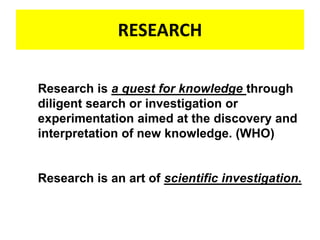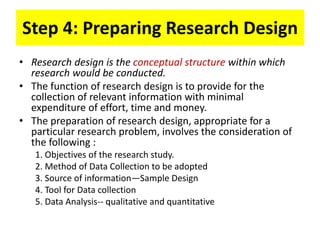This document outlines the steps involved in conducting research. It defines research as a quest for knowledge through diligent investigation aimed at discovering new information. The key steps discussed are: 1) formulating a research problem and objectives, 2) conducting a literature review, 3) developing a research design, 4) collecting and analyzing data, 5) generalizing and interpreting results, and 6) reporting findings. Ethical considerations are also discussed, such as avoiding bias, using appropriate methods, and correctly reporting results. The overall purpose of research is to systematically investigate a problem to expand understanding and knowledge.























